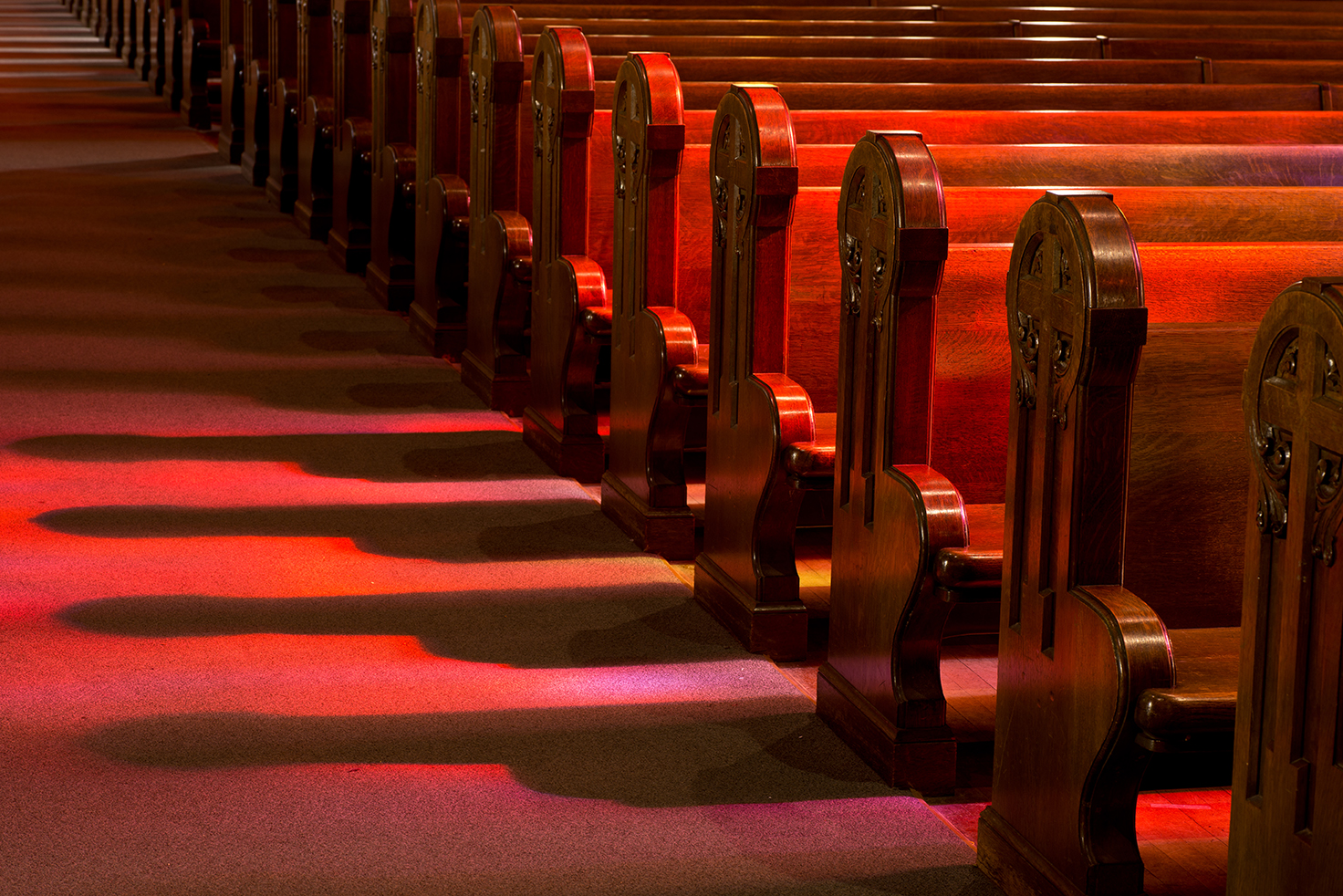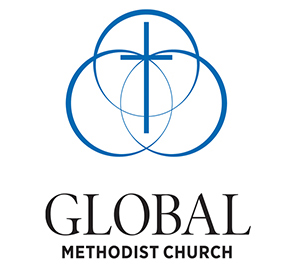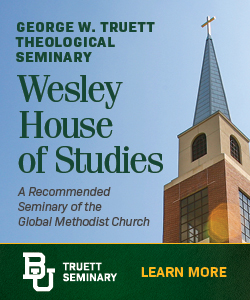Unpacking Disaffiliation
By Thomas Lambrecht
By my count, as of December 31, 2023, 7,651 churches have disaffiliated from The United Methodist Church in the U.S. since 2019. This represents 25.8 percent of the number of churches that were listed by the denomination in 2019.
Dr. Lovett Weems, of the Lewis Center at Wesley Theological Seminary, has published a helpful report analyzing the results of disaffiliation, noting the common characteristics of disaffiliating churches and pointing out salient differences. This Perspective will piggy-back on Weems’ analysis with some points of my own.
What conferences were most affected?
The Southeast Jurisdiction led the way with 37 percent of its churches disaffiliating. The conferences most affected were:
- South Georgia – 61 percent disaffiliated
- North Alabama – 52 percent
- Kentucky – 50 percent
- North Georgia – 48 percent
- Alabama-West Florida – 46 percent
- Tennessee-Western Kentucky – 42 percent
- North Carolina – 41 percent
Besides the Red Bird Missionary Conference, which lost no churches to disaffiliation, the only conferences that showed fewer than the 26 percent denominational average for disaffiliation were South Carolina, which blocked disaffiliation for many churches and for a long period, and Virginia, which imposed additional fees for disaffiliation. South Carolina continues to allow churches to disaffiliate via Par. 2549 by moving to “close” the church and then sell it to the congregation. An additional 100 churches or more are reportedly currently engaged in this process.
The South Central Jurisdiction had 32 percent of its churches disaffiliate. The jurisdictional numbers were heavily influenced by high levels of disaffiliation in some of the Texas conferences. The conferences most affected were:
- Northwest Texas – 82 percent disaffiliated
- Texas – 51 percent
- Central Texas – 45 percent
- Louisiana – 38 percent
The rest of the South Central annual conferences experienced percentages much closer to the denominational average of 26 percent. The three Texas conferences above facilitated disaffiliation by absorbing the cost of the pension liability and, in Northwest Texas, absorbing even the cost of the two years’ apportionments. So churches in those conferences were able to disaffiliate at a minimal cost.
The North Central Jurisdiction had 22 percent of its churches disaffiliate. The conferences most affected were:
- East Ohio – 38 percent disaffiliated
- West Ohio – 34 percent
- Indiana – 31 percent
Northern Illinois made it very difficult for churches to disaffiliate and had only 2 percent do so. Illinois Great Rivers imposed additional costs for disaffiliation and had only 10 percent of their congregations do so in a conference that tends to be more conservative. Minnesota had 7 percent and Wisconsin 10 percent disaffiliate. The rest of the conferences were near the average.
The Northeast Jurisdiction had only 12 percent of its churches disaffiliate. Seven of the ten Northeastern annual conferences imposed additional costs or otherwise discouraged disaffiliation. Six annual conferences therefore experienced less than 5 percent of their churches disaffiliating. Two of those conferences are currently in lawsuits filed by churches unable to disaffiliate who wanted to do so. The only outlier was Western Pennsylvania, which had 38 percent of its churches disaffiliate.
The Western Jurisdiction had only 6 percent of its churches disaffiliate. Four of the seven annual conferences imposed additional costs or otherwise discouraged disaffiliation. One of the conferences is in a lawsuit with churches unable to afford the imposed 50 percent payment of property value in order to disaffiliate.
Who Is in the GMC?
Weems’ report mentions that fewer than half of the churches that disaffiliated have joined the Global Methodist Church (GMC). That was based on the information he had at the time, but churches are joining the GMC each week, so that number is increasing. At the time of this writing, there were approximately 4,100 churches in the GMC, of which about 3,850 are in the U.S. Therefore, at this point about half of the U.S. churches that disaffiliated have joined the GMC. Many are still in the process of discernment, while paying off the debt incurred for departure fees. Others are waiting to see how the denomination develops in light of its inaugural General Conference scheduled for September of this year.
One can see from this that joining a denomination was not a high priority for many disaffiliated churches. It is sad that their experience with the UM Church was such as to make them reluctant to join another denomination after disaffiliation. It may be that some churches would just rather be independent, but it may also be that a number of churches are suffering from post-denominational trauma and need healing before considering aligning with another denomination. Eventually, many of these wounded churches will see the value of being part of something bigger than themselves and seek out an alignment that fits their ministry passion.
One should also acknowledge that several dozen disaffiliated churches have joined other denominations, such as the Free Methodist or Wesleyan Churches. Some have formed their own independent networks. The percentage of non-aligned churches may be less than it appears, and it will shrink over time.
Reasons for the difference in disaffiliation
As pointed out above, some annual conferences made it much easier to disaffiliate, while other annual conferences made it more difficult. Conferences that followed a straight Par. 2553 process without additional costs experienced an average 28 percent disaffiliation rate. Conferences that imposed additional costs or made the process more difficult experienced an average 13 percent disaffiliation rate.
Conferences in the North and West that had a low disaffiliation percentage also have a history of more liberal/progressive policies. This was exhibited in resolutions on social issues, as well as a bias against admitting theologically conservative clergy and such clergy receiving less prestigious appointments. More traditionalist clergy and members have left the UM Church in those conferences down through the years prior to 2019, so there were not as many traditionalists left to disaffiliate.
Conferences in the South have had a more traditionalist theological milieu and retained many more of their traditionalist clergy and members prior to disaffiliation. There were thus more traditionalists to disaffiliate. The same was true in Western Pennsylvania, Ohio, and Indiana, which were the heart of the Evangelical United Brethren Church. Those areas also retained a more traditionalist theological milieu and thus experienced a higher level of disaffiliations.
Weems wonders whether congregations in the South and Midwest did not fully embrace the unifications that took place in 1939 and 1968. While that may be a factor, it seems like the passage of time would mitigate that effect. It appears just as likely that the theological climate of the prior denominations carried over into the United Methodist denomination following merger, which then influenced the different directions these churches took.
Why more ethnic congregations did not disaffiliate
According to Weems’ research, ten percent of all UM congregations were majority people of color prior to disaffiliation, yet only three percent of disaffiliating churches were majority people of color.
The issue of race within United Methodism has always been a complex and sensitive issue to calculate, since the denomination is overwhelmingly populated by white congregations. In addition to United Methodism, our sister denominations – African Methodist Episcopal Zion, Christian Methodist Episcopal, and African Methodist Episcopal – have primarily African American membership.
Speaking in generalities, African American churches (70 percent of all ethnic UM churches) tend to be more conservative theologically, but more liberal politically. They face the dilemma of being a unique element in either a denomination that may be perceived to be more liberal both politically and theologically or a denomination that may be perceived to be more conservative both politically and theologically.
There is an understandable history of mistrust of white churches in the South – and perhaps other parts of the country – that participated in racial segregation in the past. There is also a well-established and laudable support system in the UM Church for black clergy, which would have to be built from scratch in a new denomination. These are only some of the unique factors that would accompany a discussion of disaffiliation.
In addition to cultural factors (and perhaps language considerations), there are some Hispanic congregations that are dependent upon support from the annual conference and/or meet in other UM congregations’ facilities. That makes disaffiliation more challenging. Furthermore, many Hispanic pastors are licensed local pastors and thus more vulnerable to being let go from their positions by bishops and committees on ordained ministry that are hostile to disaffiliation. Once again, their process of disaffiliation could face unique challenges.
Similarities in size
When disaffiliations were first ramping up in 2022, the word from some institutionalists was that most of the disaffiliating churches were small churches, and that the large churches were not disaffiliating. Weems’ research shows that not to be true.
According to Weems, similar proportions of churches disaffiliated at all size levels of worship attendance. In the UM Church, six percent of all churches averaged over 250 in worship attendance. Five percent of disaffiliating churches averaged over 250. In the UM Church, 13 percent averaged between 100 and 250 in worship attendance, while 12 percent of disaffiliating churches did so. In the UM Church, 82 percent of all churches averaged less than 100 in worship, while 83 percent of disaffiliating churches did.
Disaffiliating churches almost perfectly matched the size profile of the denomination as a whole.
As Weems writes, “Researchers have much with which to work in answering the many questions raised by the experience of the United Methodist Church from 2019 through 2023. If past divisions are predictive, there will be a host of partisan narratives. What will be most needed are objective scholars who can go beyond statistical data to representative surveys and qualitative research to answer some [additional] questions.”
While the ideas and explanations proposed above may seem partisan to some, they resonate with the statistics and with personal experience. Further research may bear them out or find different answers.
There is no question that a cataclysmic change has affected American Methodism and may yet heavily impact Methodism in other parts of the world. Aside from the statistical and sociological explanations for what has taken place, it would be wise not to ignore the spiritual aspects, as well. In many disaffiliating congregations, there was a clear sense of God’s leading and a desire to be faithful to non-negotiable theological perspectives. Many church members would have prioritized the spiritual factors leading to separation over the more pragmatic ones, and the spiritual factors will not necessarily show up in a statistical analysis. It is these spiritual aspects that will give unity and purpose to the Global Methodist Church, the UM Church, and to other entities arising out of this traumatic separation event.
Thomas Lambrecht is a United Methodist clergyperson and vice president of Good News. Photo: Shutterstock.






0 Comments